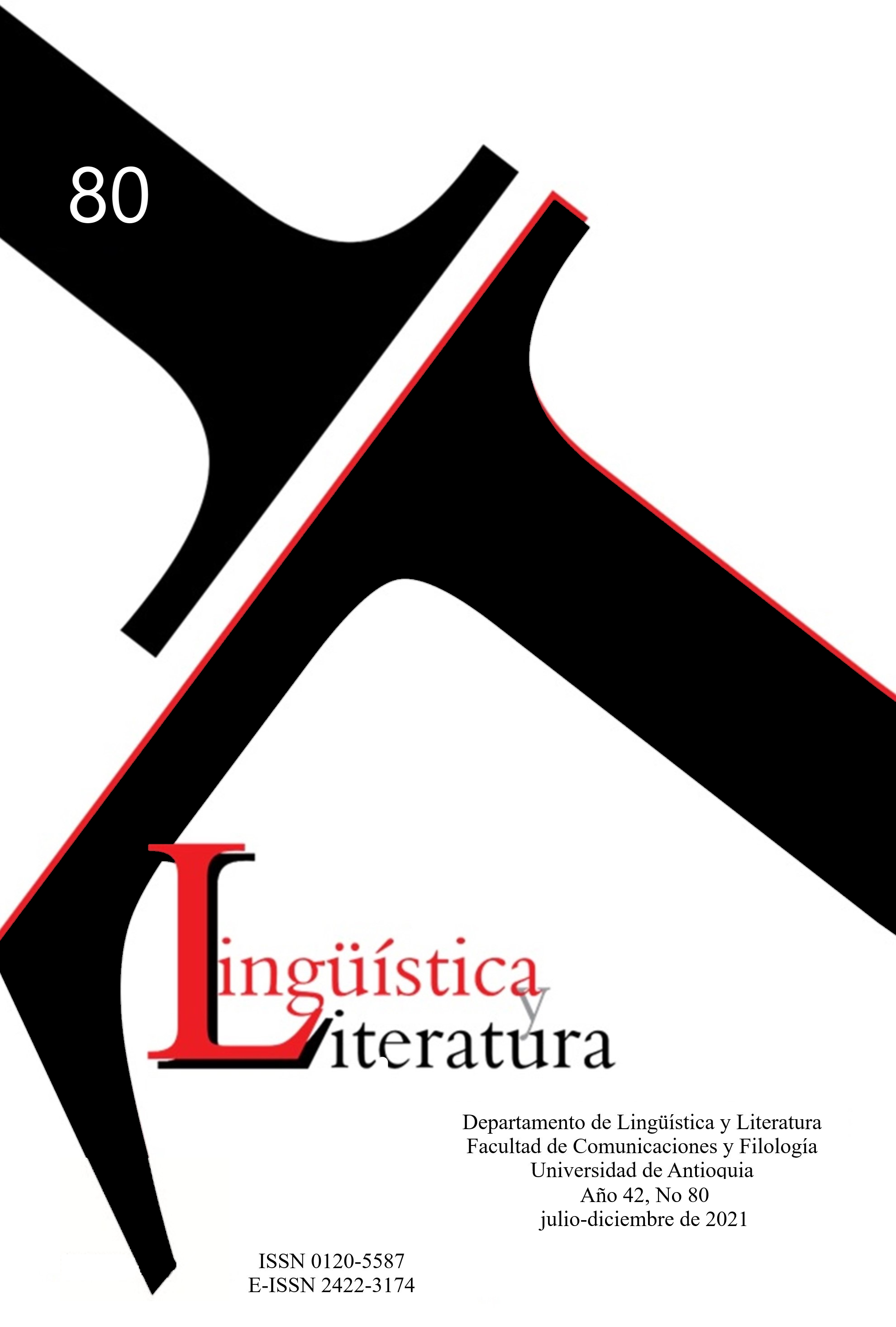On the biological study of language 50 years later. A conversation with Noam Chomsky
DOI:
https://doi.org/10.17533/udea.lyl.n80a21Keywords:
Translation, InterviewAbstract
Original article entitled "50 Years Later: A Conversation about the Biological Study of Language with Noam Chomsky," published in the Forum section of the journal Biolinguistics, 11, 2017, SI: 487-499, http://www.biolinguistics.eu. Interview translated from English by Miguel Ángel Mahecha Bermúdez and Rubén Arboleda Toro.
Downloads
References
Arbib, Michael A. (2017) [este número]. Language and Brain: Developmental Aspects: Eric Lenneberg at theNeurosciences Research Program in 1972. Sección Biolinguistics.
Becker, Misha K. (2017) [este número]. Innate Mechanisms for Acquiring Syntactic Displacement. Sección Biolinguistics.
Bem, Daryl J. & Sandra L. B. (1968). Nativism Revisited: A Review of Eric H. Lenneberg’s Biological Foundations of Language. Journal of the Experimental Analysis of Behavior, 11(4), 497-501. doi:10.1901/jeab.1968.11-497.
Berwick, R. C. & Chomsky, N. (2016). Why Only Us? Language and Evolution. Cambridge, MA: MIT Press.
Berwick, R. C. & Stabler, E. (In press). Parsing with Minimalist Grammars. Oxford, England: Oxford University Press. [Berwick, Robert Edward Stabler (Ed.) 2019. Minimalist Parsing. NewYork, Oxford University Press.]
Bizzi, E. & Ajemian, R. (2015). A Hard Scientific Quest: Understanding Voluntary Movements. Daedalus, 144(1), 83-95. Doi: 10.1162/DAED a 00324.
Boeckx, C. &. Grohmann, K. (2007). The Biolinguistics Manifesto. Biolinguistics, 1, 1-8.
Chesi, C. & Moro, A. (2015). The Subtle Dependency between Competence and Performance. In Angel J. Gallego & Dennis Ott (Eds.), 50 Years Later: Reflections on Chomsky’s Aspects. Cambridge, MA: MITWPL. 33-45.
Chomsky, N. (1957/2002). Syntactic Structures (2nd edition.). Berlin: De Gruyter.
Chomsky, N. (1959). A Review of B. F. Skinner’s Verbal Behavior. Language, 35(1), 26-58.
Chomsky, N. (2016). What Kind of Creatures Are We? New York: Columbia University Press.
Christiansen, M. H., & Muller, R-A. (2015). Cultural Recycling of Neural Substrates during Language Evolution and Development. In M. S. Gazzaniga & G. R. Mangun (Eds.), The Cognitive Neurosciences v. (pp. 675-682). Cambridge, MA: MIT Press.
Friederici, A. D. (2017a). Language in Our Brain: The Origins of a Uniquely Human Capacity. Cambridge, MA: MIT Press.
Friederici, A. D. (2017b) [este número]. Neurobiology of Syntax as the Core of Human Language 325-338. Sección Brief.
Friederici, A. D., Chomsky, N., Berwick, R. C., Moro, A. & Bolhuis, J. J. (2017). Language, Mind and Brain. Nature Human Behaviour. Doi: 10.1038/s41562-017-0184-4.
Hauser, M. D. & Watumull, J. (2016). The Universal Generative Faculty: The Source of Our Expressive Power in Language, Mathematics, Morality, and Music. Journal of Neurolinguistics. DOI:10.1016/j.jneuroling.2016.10.005.
Lashley, K. S. (1951). The Problem of Serial Order in Behavior. In L. A. Jeffress (Ed.), Cerebral Mechanisms in Behavior (pp. 112-146). New York: Wiley.
Lenneberg, E. H. (1964). A Biological Perspective of Language. In E. H. Lenneberg (Ed.), New Directions in the Study of Language (pp. 65-88). Cambridge, MA: MIT Press.
Lenneberg, E. H. (1967). Biological Foundations of Language. New York: Wiley.
Lenneberg, E. H. (1972). Language and Brain: Developmental Aspects. A Report Based on an NRP Work Session Held November 19-21, 1972, and updated by participants. Neuroscience Research Programme Bulletin, 12(4), 511–656.
Marr, D. (1982/2010). Vision: A Computational Investigation into the Human Representation and Process. Cambridge, MA: MIT Press.
Martins, P. T. & Boeckx, C. (2016). What We Talk about when We Talk about Biolinguistics. Linguistics Vanguard, 2(1). doi: 10.1515/lingvan-2016-0007.
Piattelli-Palmarini, M. (2017) [este número]. From Zero to Fifty: Considerations on Eric Lenneberg’s Biological Foundations of Language and Updates, 423 -444, sección Forum
Merriam-Webster Dictionary (2021). Expatation. https://www.merriam-webster.com/dictionary/exaptation
Published
How to Cite
Issue
Section
License
Copyright (c) 2021 Linguistics and Literature

This work is licensed under a Creative Commons Attribution-NonCommercial-ShareAlike 4.0 International License.
Creative Commons by-nc-sa
Those authors who have publications with this journal, accept the following terms:
1. The journal is the owner of the copyright of the articles, which will be simultaneously subject to the Creative Commons Attribution-NonCommercial-ShareAlike 4.0 International License. that allows third parties to share the work provided its author is indicated and its first publication in this journal.
2. The authors may adopt other agreements of non-exclusive license of distribution of the version of the published work (e.g., deposit it in an institutional telematic file or publish it in a monographic volume) provided that the initial publication in this journal is indicated.
3. Authors are allowed and recommended to disseminate their work via the Internet (e.g. in institutional telematic files or on their website) before and during the submission process, which can produce interesting exchanges and increase citations of the published work.










